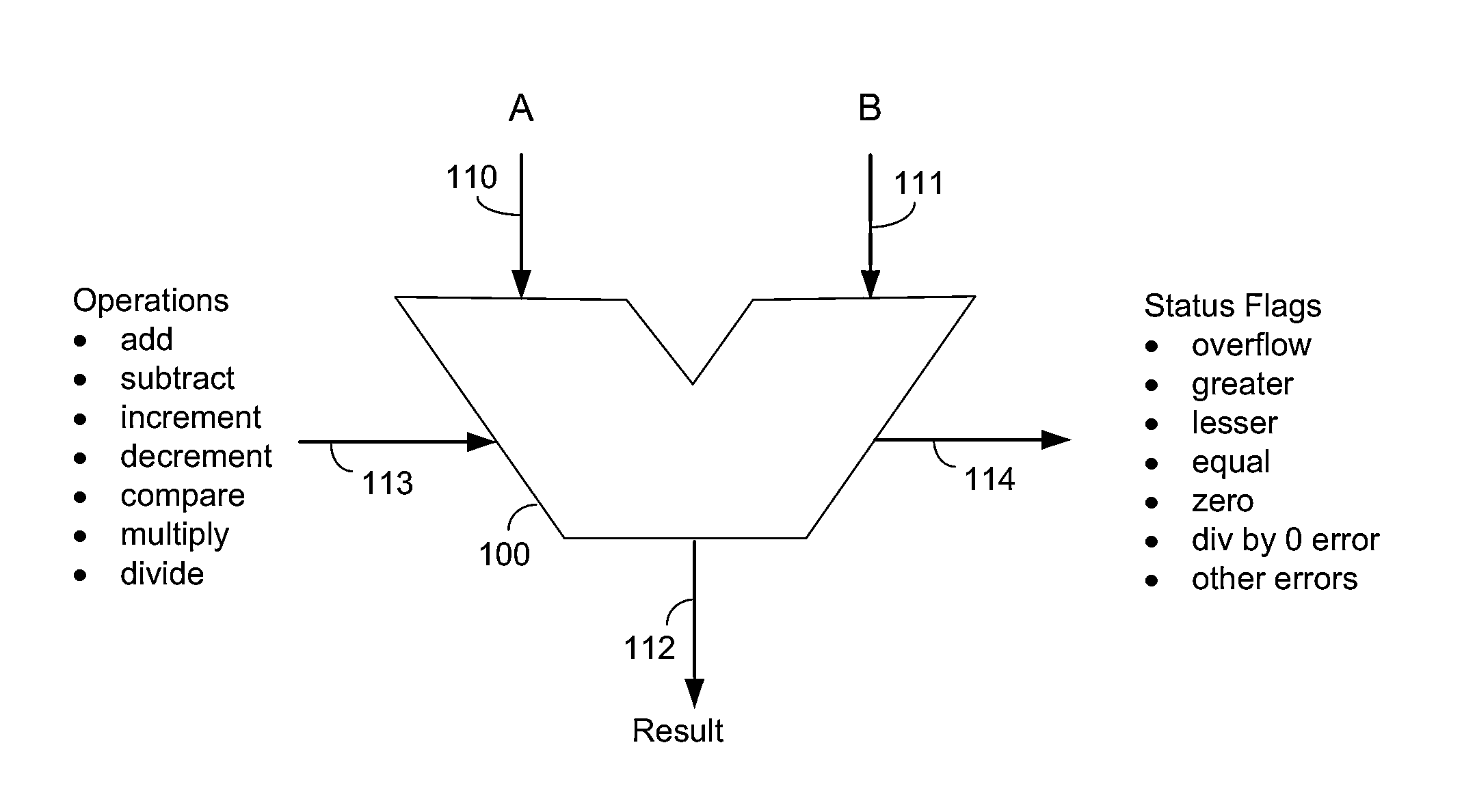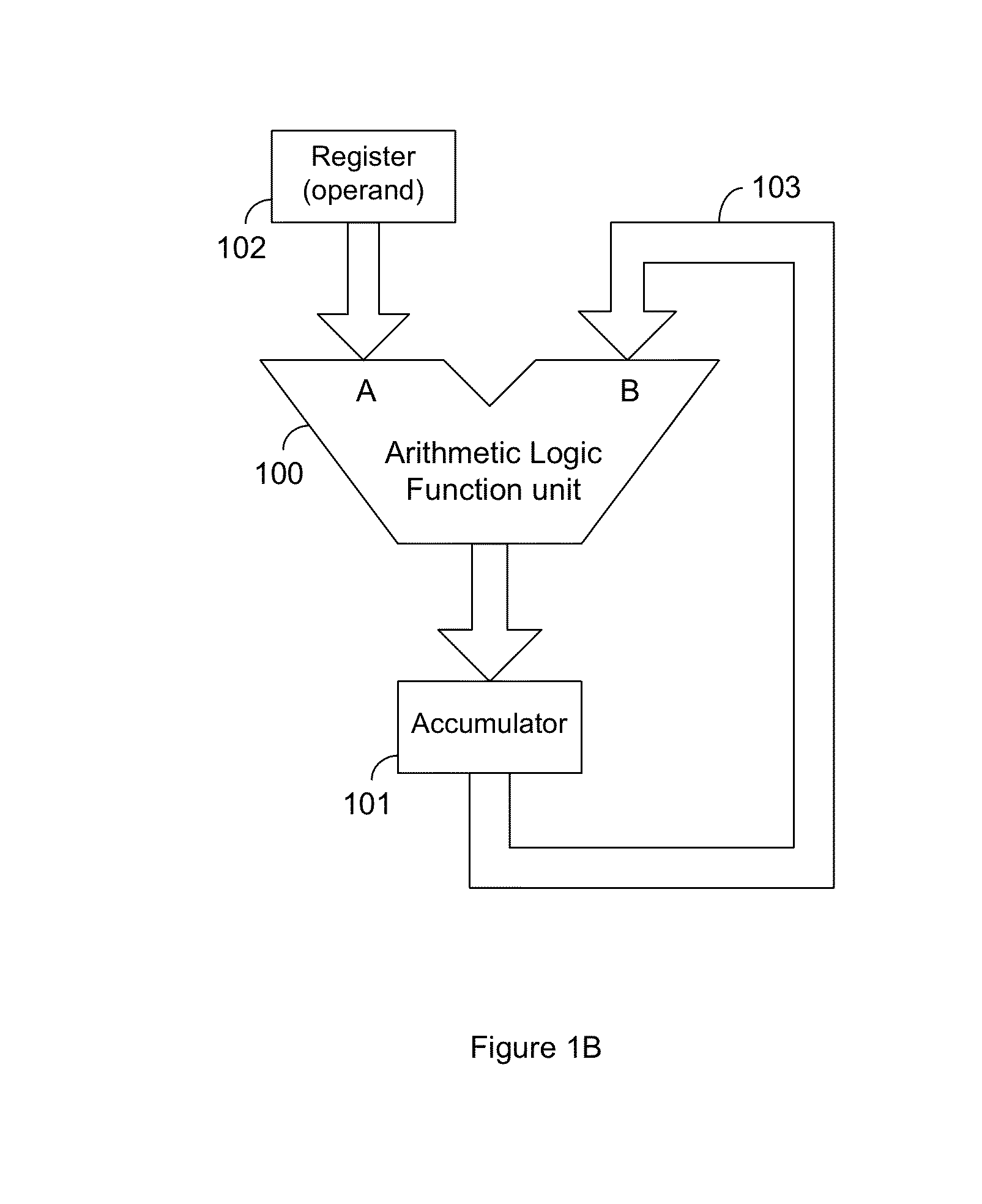Conversion apparatus for a residue number arithmetic logic unit
a conversion apparatus and logic unit technology, applied in the field of general purpose arithmetic logic units, can solve problems such as restricting the usefulness of alu, and achieve the effects of enhancing performance, enhancing efficiency, and conserving critical hardware resources
- Summary
- Abstract
- Description
- Claims
- Application Information
AI Technical Summary
Benefits of technology
Problems solved by technology
Method used
Image
Examples
example rns
Integer Divide
[0442]FIG. 13B illustrates an integer divide example according to the control flow of FIG. 13A. The divide example is illustrated using a dual accumulator RNS ALU. One ALU is loaded with the dividend, the other ALU is loaded with the Divisor, as shown in the first step marked start 1330. In the example, the ALU assigned to the dividend is loaded with the value of (282), while the ALU associated with the divisor is loaded with (59). This is a simple example chosen to illustrate basic integer divide operation.
[0443]In the figure, the primary control steps are listed in the first column 1300, and are associated to the operation description, listed in the second column 1305. For each step in the diagram, the state of the dividend value and the divisor value are listed. The ALU structure in the example of FIG. 13B supports a simple eight digit RNS number with the modulus values {2, 3, 5, 7, 11, 13, 17, 19}. Range requirements for the operands are not analyzed here.
[0444]Aft...
PUM
 Login to View More
Login to View More Abstract
Description
Claims
Application Information
 Login to View More
Login to View More - R&D
- Intellectual Property
- Life Sciences
- Materials
- Tech Scout
- Unparalleled Data Quality
- Higher Quality Content
- 60% Fewer Hallucinations
Browse by: Latest US Patents, China's latest patents, Technical Efficacy Thesaurus, Application Domain, Technology Topic, Popular Technical Reports.
© 2025 PatSnap. All rights reserved.Legal|Privacy policy|Modern Slavery Act Transparency Statement|Sitemap|About US| Contact US: help@patsnap.com



